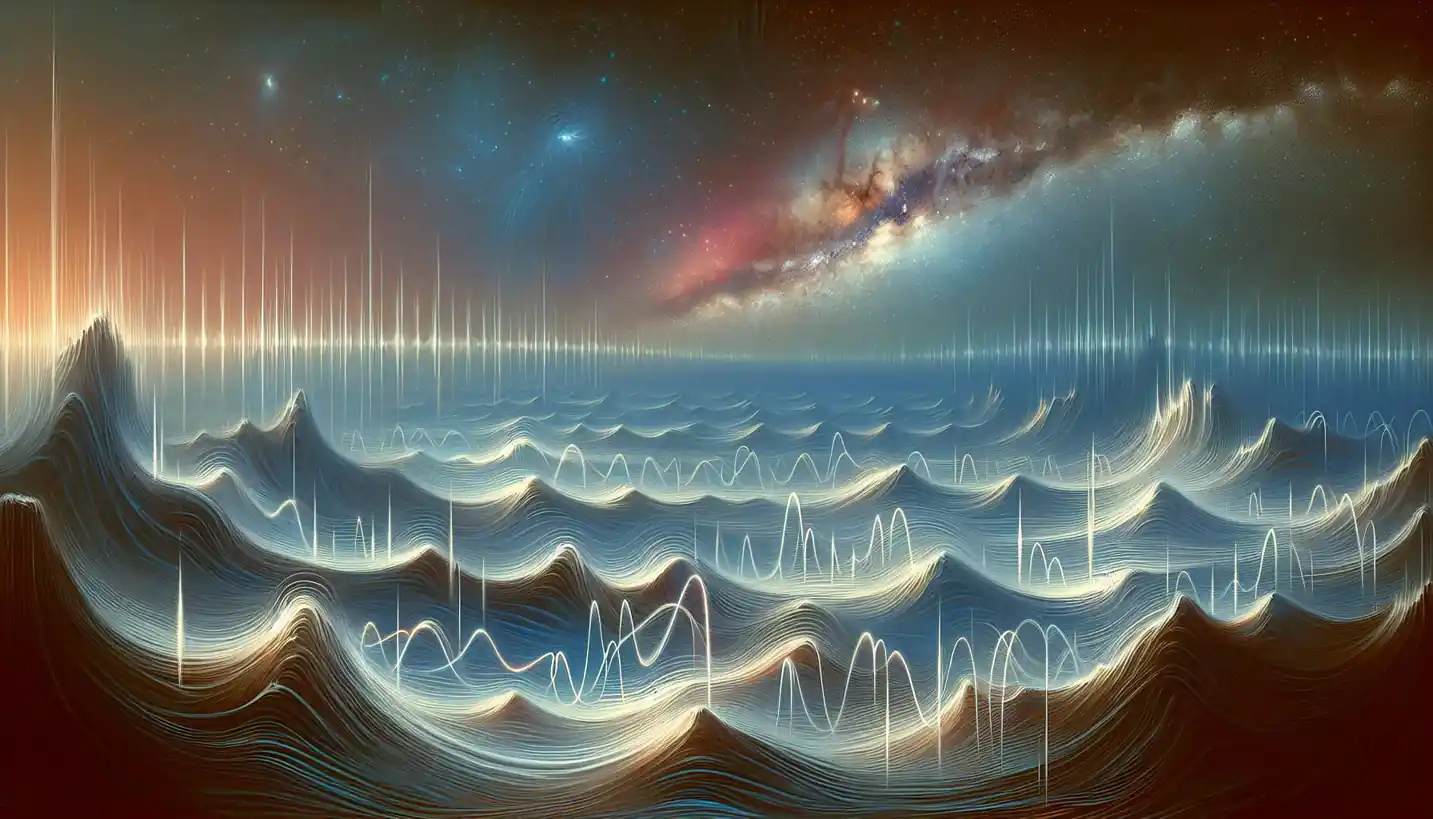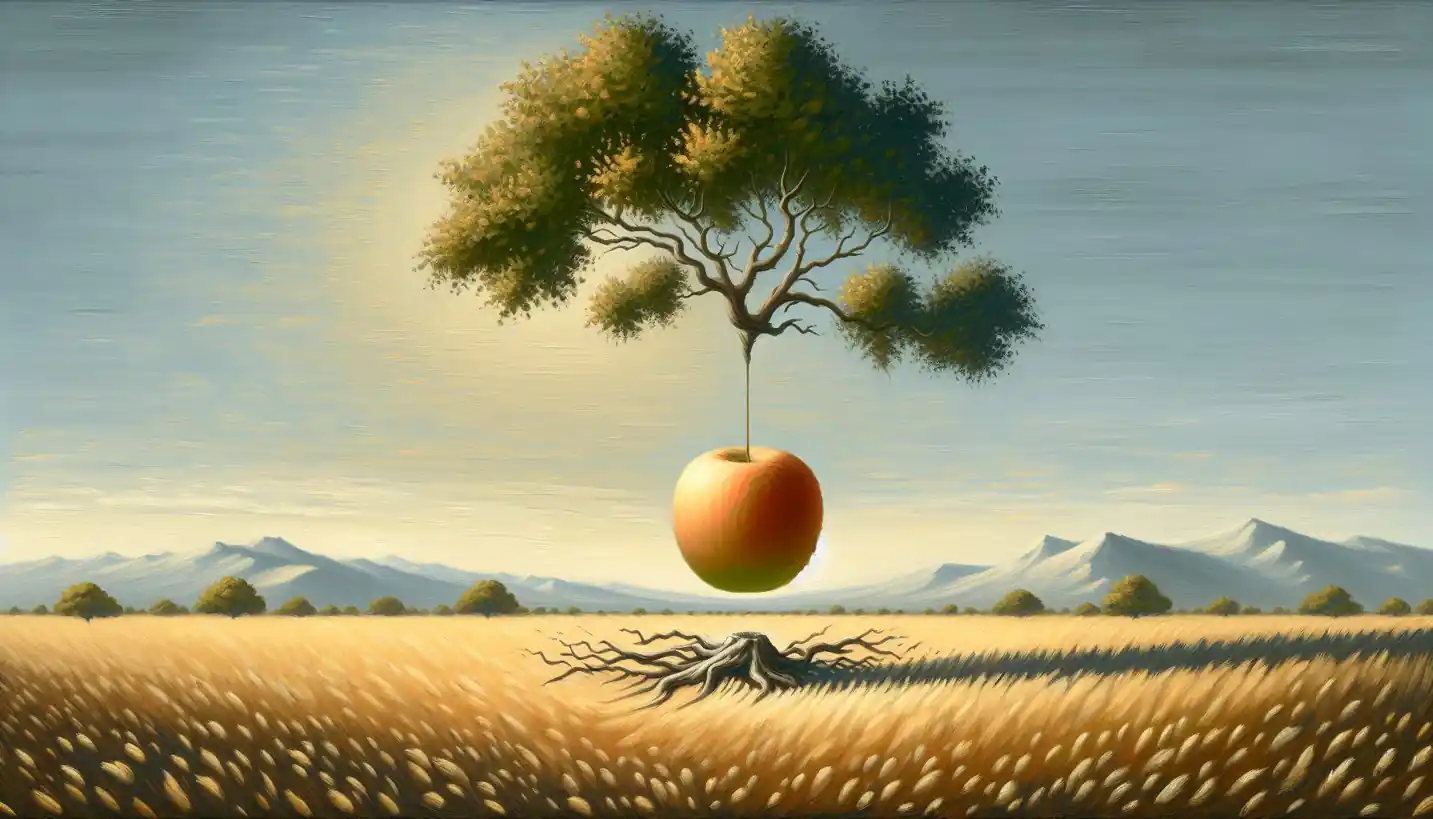· Physics · 4 min read
Vector Fields: Understanding the Invisible Arrows of Physics
Invisible arrows in vector fields guide us through complex physics landscapes. Discover how these patterns simplify chaotic forces, revealing nature’s hidden paths.

From the fluttering of leaves in the wind to the force that holds your feet on the ground, vector fields are at play. These mathematical tools are like invisible maps that point the direction and magnitude of various physical phenomena.
What is a Vector Field?
In simple terms, imagine a vector field as a giant swarm of arrows. Each arrow represents a vector, which has both a direction and a magnitude. It’s like an invisible map. When you walk outside on a windy day, the way you feel the wind pushing against you can be thought of as a vector field, where each point in space has a specific wind speed and direction.
The Role of Vector Fields in Physics
Vector fields are everywhere in the world of physics. They help us describe gravitational, electric, and magnetic fields, among others. For instance, the force that pulls us down to Earth can be envisioned as a gravitational field, where vectors point towards the center of our planet.
Gravitational Fields
Think about standing on a trampoline with a bowling ball at the center. The trampoline bends around the ball, just as space bends around planets due to gravity. Every point on this bent surface has a vector pointing towards the bowling ball, representing the gravitational pull you would feel at that point.
Electric and Magnetic Fields
Electric fields can be thought of as how a charged particle would feel force due to another charge’s presence. Imagine two magnets. As you bring them closer, you feel a push or pull due to the magnetic field vectors between them. These vectors tell you both the direction of that magnetic force and its strength.
How Vector Fields are Represented
Visualizing vector fields often involves drawing arrows on a grid. Each arrow has a starting point and an orientation, much like a weatherman’s map filled with wind directions and strengths. In mathematical terms, a vector field is a function that assigns a vector to every point in space.
The Mathematics Behind Vector Fields
Mathematically, a vector field is often represented as (\textbf{F}(x, y, z)) in three-dimensional spaces, where (\textbf{F}) is a function that assigns a vector with components (F_1, F_2,) and (F_3) to each point in the space. These components depend on the position in space (x, y,) and (z).
Gradient, Divergence, and Curl
To truly appreciate vector fields, one must understand certain operations:
Gradient: Think of climbing a hill. The steepest path up the hill represents the gradient, showing the direction and rate of fastest increase.
Divergence: Imagine air flowing out of a balloon. Divergence measures how much a vector field spreads out from a point, akin to how air spreads when a balloon is punctured.
Curl: Picture a whirlpool. Curl measures the rotation or swirling of a vector field around a point, just like water circling a drain.
Applications of Vector Fields
Vector fields underpin a plethora of applications, from weather forecasting to electromagnetics. They help simulate ocean currents, the movement of stars in galaxies, and even airflow over airplane wings.
Weather Forecasting
Weather maps displaying wind patterns are a classical example of vector fields. Meteorologists use these to predict weather changes, helping us prepare for storms or enjoy a sunny day.
Fluid Dynamics
In fluid dynamics, vector fields describe flows of liquids and gases. Engineers rely on these fields to design more efficient engines or predict the spread of pollutants in air and water.
Vector Fields in Modern Technology
With technology advancing rapidly, vector fields play critical roles in virtual reality, computer graphics, and medical imaging. For instance, in MRI scans, vector fields help visualize the inside of the human body, leading to more accurate diagnoses.
Virtual Reality
In virtual reality, vector fields simulate environments that react realistically to user movements. This technology makes gaming and training simulations more immersive and lifelike.
Computer Graphics
Graphics software uses vector fields to render realistic animations, simulating natural phenomena like flowing water or moving clouds for movies and games.
The Future of Vector Fields
As our world becomes more interconnected and complex, understanding vector fields could unlock new frontiers in science and technology. From enhancing renewable energy systems to improving transportation networks, the potential applications are vast.
Open-Ended Possibilities
As researchers delve deeper into quantum physics and explore realms beyond the visible spectrum, vector fields could offer insights into unseen forces and patterns in the universe, revolutionizing our grasp of fundamental laws.
Conclusion
Vector fields might be invisible, but their impact on the physical world is profound. From guiding us safely through turbulent weather to making video games more captivating, they are the unseen architects of both nature’s forces and our technological advances. As you look around, realize that these subtle arrows map the very forces that weave the fabric of our universe. The study of vector fields is not only a journey into the heart of physical laws but a gateway into the untapped potential of the future.



